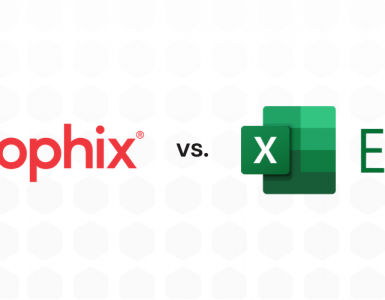
Managing large spreadsheets presents a major challenge
Years ago, in the dim and distant past, when mainframes ruled the IT universe, there was a category of software called fourth generation languages (4GL). Since this is the computer software business, where terminology runs wild, there was no firm definition of what constituted a 4GL. However, they were generally positioned as a step forward from 3GLs (such as FORTRAN and COBOL) in that they enabled end users to query databases and even build simple applications without the requirement for IT expertise.
Nowadays, most people would agree that 4GLs are no longer relevant as major players in the software business. This raises the question: what have end users been using for the last 20 years to do what 4GLs used to do? The answer, in most cases, is spreadsheets.
4GLS were most successful when they were used on mainframes. Some 4GLs were successful in minicomputers and it is arguable that in the PC environment some early database systems performed the same functions as 4GLs. But, especially for Finance users in large companies, spreadsheets have been used to perform many of the tasks that were formerly the domain of 4GLs. Data can be loaded into spreadsheets and simple tasks performed such as sorting and filtering. Spreadsheets are also great for performing calculations.
But for more sophisticated tasks, spreadsheets leave a lot to be desired. Workflow in spreadsheets is difficult to document and although the files can handle large amounts of data, managing large spreadsheets presents a major challenge. This is especially true when multiple users are considered, since spreadsheets lack adequate security and collaborative workflow and are far from ideal for tasks that involve many people entering data or receiving reports.
Corporate Performance Management (CPM) software has been used in the past by the finance departments of many large companies to automate non-transactional processes that are repeatable, collaborative, and analytical in nature. However, this has usually involved IT staff (or consultants) building applications, either using spreadsheets or a proprietary language. These are difficult for Finance professionals to maintain and hence become static so that they no longer meet the needs of a changing business environment.
Now, with Prophix, we have a software product that enables Finance people to develop and maintain these types of applications themselves. Finance becomes empowered, without depending on ‘power users’, whether these are spreadsheet maestros or IT programmers.
Is Prophix’s software a 4GL? Not in the usual sense of the term. However, Prophix gives Finance departments the freedom to build multi-user applications for themselves with proper security and workflow that can handle moderately large amounts of data more easily than a spreadsheet would.
This is what I discovered at a recent Prophix user conference. Finance people who use Prophix are building the kinds of applications that 20 or 30 years ago in large companies would be the domain of 4GLs. There is clearly a need for this type of software and Prophix is filling the gap.






